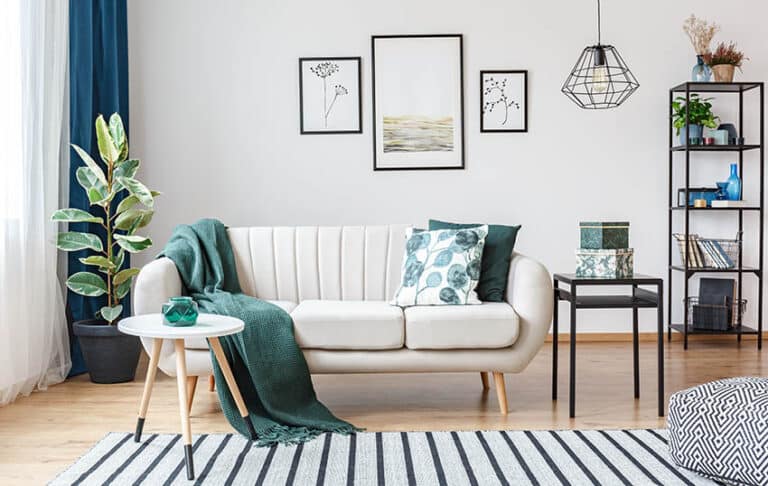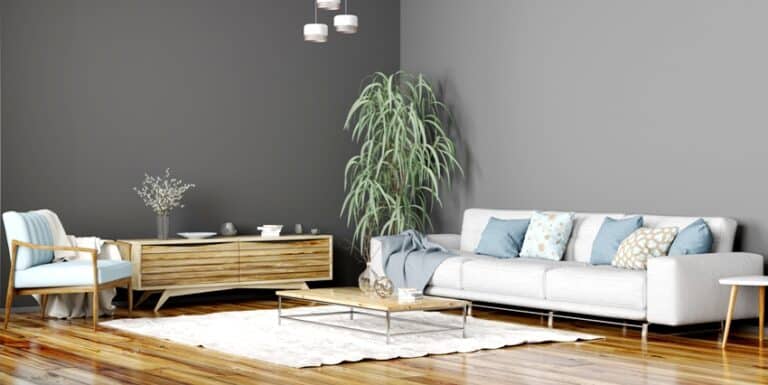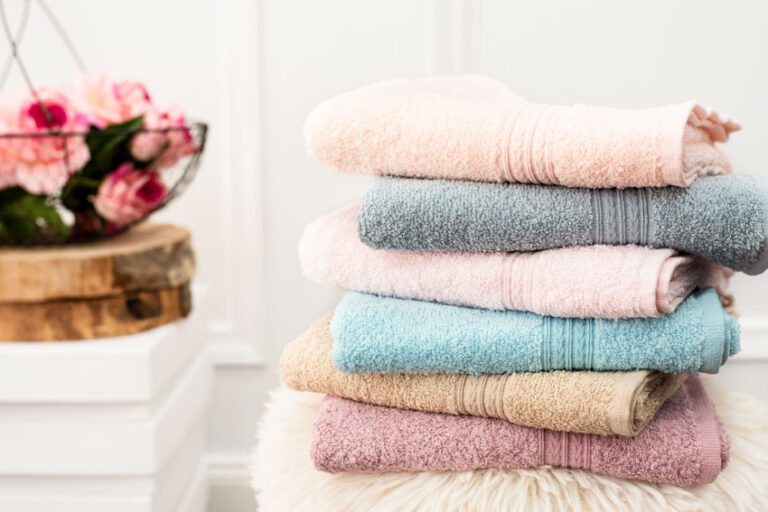17 Types of Pillow Cases (Fabrics & Closure Options)
With a vague ‘new pillowcase’ on the shopping list one can get mighty confused on what you may really want. There are many types of pillowcases that you can get as well as fabrics that can be used on said pillowcases.
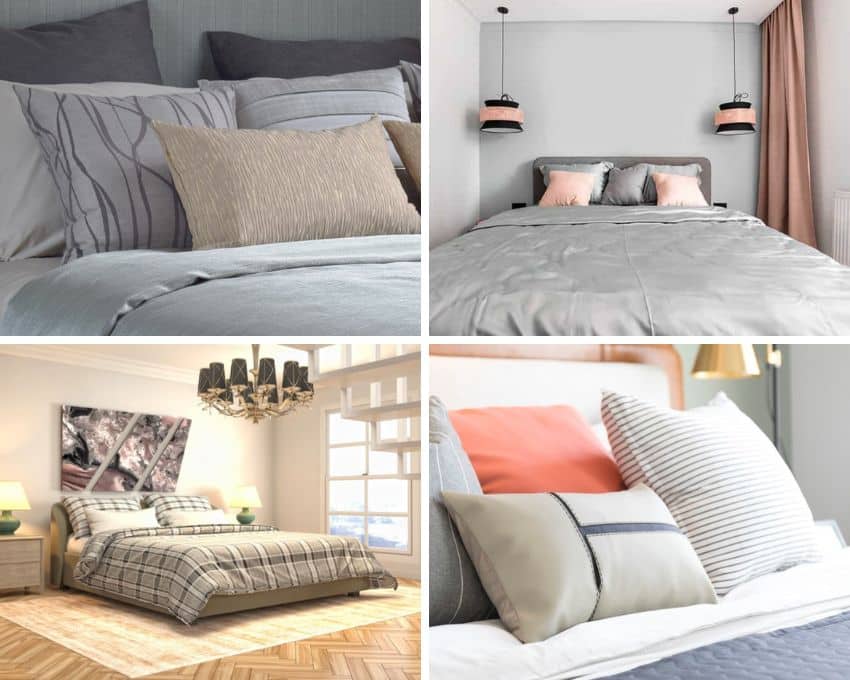
Not only that but there are also a few different ways you can secure the pillow into the pillowcase. This variety of different options means that there may need to be some additional research done before you head to the store to pick out your new pillowcases.
Luckily you are in the right place – below are descriptions of some of the most popular types and fabrics as well as a breakdown of which is better for certain situations.
Standard (Housewife) Pillowcase
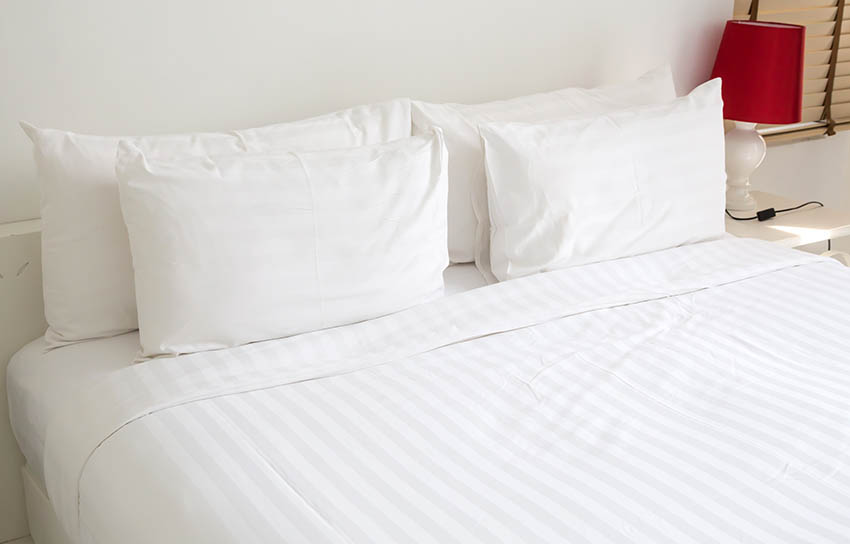
The standard pillowcase that we are used to is also known as the housewife pillowcase. This type has an opening on one of the ends of the pillowcase with a flap inside to cover up the opening, leaving none of the pillow exposed.
The housewife pillowcase is what typically comes with bedding sets and are the standard for sleeping pillows. They come in sizes from King, queen, full, and twin size pillows. See our guide to pillow dimensions here.
Oxford Pillowcase

An Oxford pillowcase is another common type. This pillowcase is identified by the thick border along the entire sides. These are similar to the sham pillows discussed later and are a little more decorative than others.
The laid-back luxury of an Oxford pillowcase, its border showcasing a plump pillow, lends relaxed charm to any room in the house and is simplicity itself to sew. – Pillows, Curtains, and Shades, DK 2017
There are usually a few Oxford pillowcases and a few standard styles in a set as they are easily used in conjuncture to create a full set. The Oxford pillowcase is available in a variety of sizes including king, queen, full, and twin sizes.
• Oxford pillowcase vs standard: The difference between an Oxford and a standard pillowcase is typically the use. As mentioned an Oxford design is commonly used for more decorative purposes.
Oxford pillowcases are a little more difficult to change out on a regular basis. A standard pillowcase is the best option when you are looking for one to be used on a daily basis for sleeping. An Oxford style can be used for sleeping pillows or throw pillows.
Pillow Sham
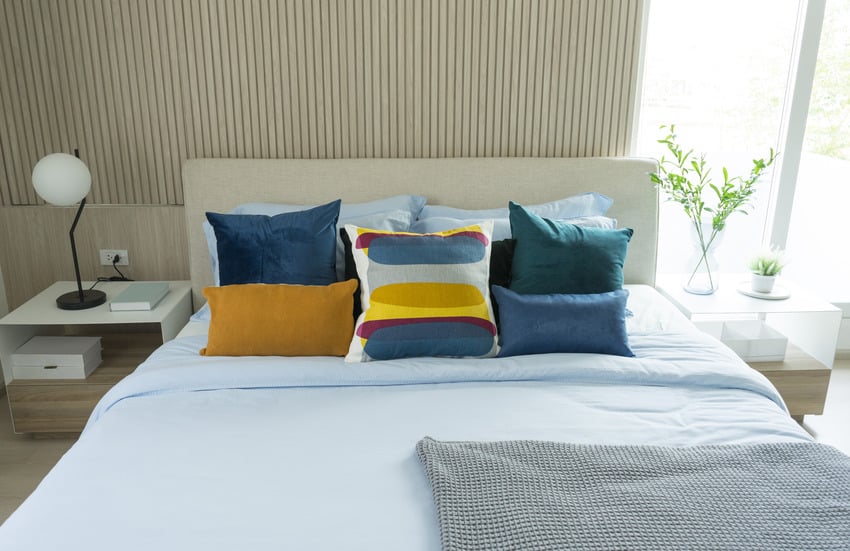
A pillow sham is used to turn a standard pillow into a decorative pillow. The pillow sham has an envelope enclosure or a fastened edge that helps keep the pillow enclosed. There could also be a flange or a cord around the edge of the pillow inside.
The pillow sham can be used on regular pillows or pillows that are meant to be decorative by design. These types of pillowcases can also have different sorts of decorative features such as fringe, lace, or other embellishments. Pillow sham pillowcases also typically have a more intricate design on the fabric to create a more vibrant appearance.
Throw Pillowcase
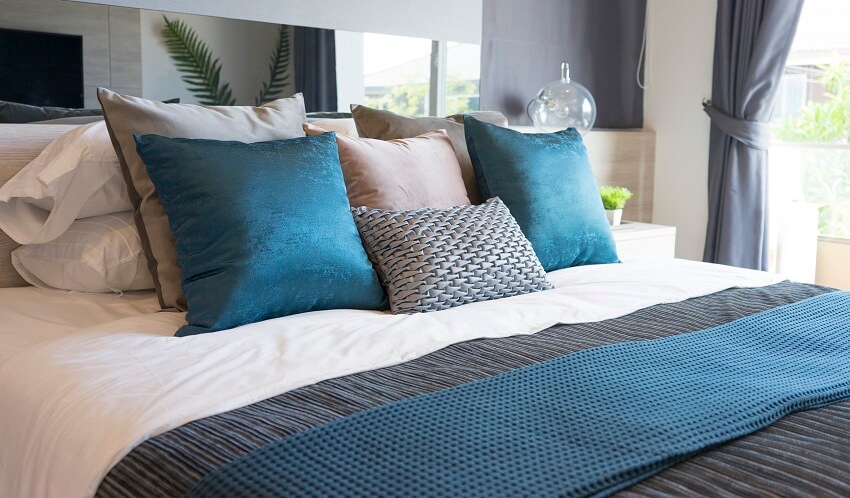
Throw pillows are mainly decorative which means their pillowcases are more eccentric and detailed. The objective of these pillowcases is less on the durability, temperature regulation, and support for sleepers and more on the style and overall appearance
These pillowcases typically need to be cleaned a little less as they do not get the nightly sweat and oil that other sleepers‘ types might, but they need to be cleaned on occasion so they tend to have some cleaning ability. These types of pillows can contain different kinds of embellishments for aesthetics.
Square Pillowcase (Euro Sham Style)
Often used for decorative purposes a square (Euro sham) pillowcase is similar to the Oxford style. It has a wide stitched flat hem that creates a border around the edges.
These are often used as a throw pillow but have distinct edging that creates a flap or border rather than being completely smooth.
Pillow Case Fabrics
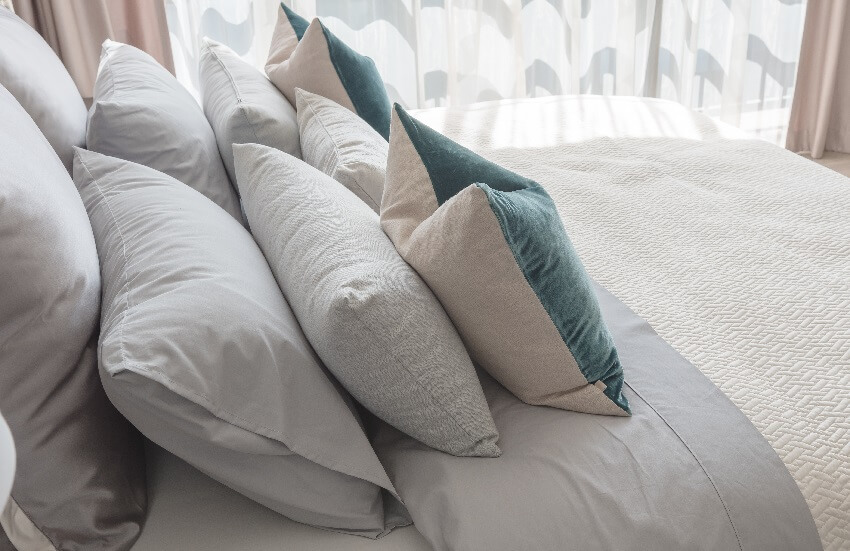
Pillowcases come in a wide variety of fabrics. Typically you can get every type that is mentioned above in any of the fabrics listed below. This gives a great deal of options when deciding which one is best for you.
Fabrics can change the comfort levels, the durability of the fabric, and even the ease of upkeep. These fabrics can also vary in color, texture, and size.
The choice of fabric can affect the quality of sleep more than the type of pillowcase. Some of the most popular fabrics you can select from are as follows.
Cotton
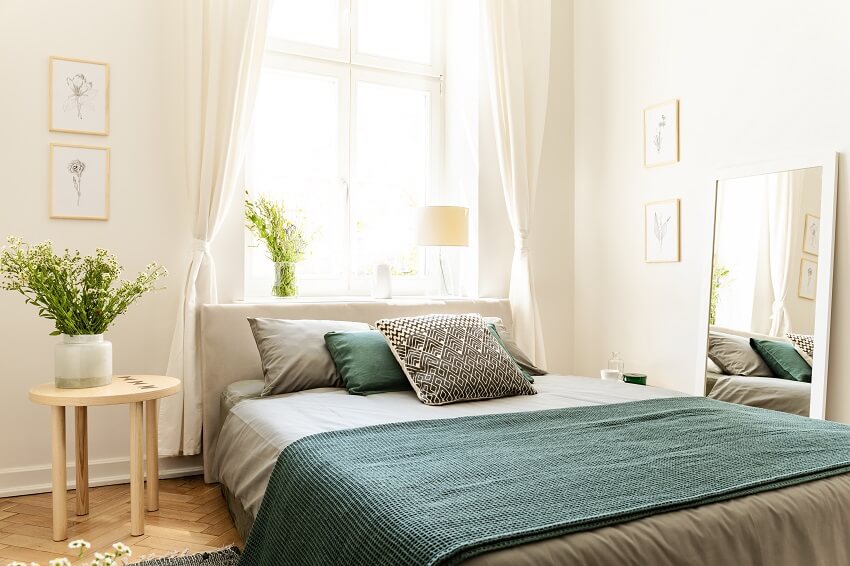
Cotton pillowcases are one of the most commonly found fabrics. Cotton is a natural fabric that is both soft and long-lasting.
The material has a bit of breathability to it that can keep the temperature good during all seasons. This is one of the biggest reasons cotton is used so much in bedding and pillowcases.
Cotton pillowcases are easily found in any size or color desired. Cotton can be absorbent which can be good in some cases and bad in others. Being aware of its absorbency can make sure you let your hair dry before heading to sleep.
Cotton is a reasonably priced fabric when it comes to using it for pillowcases. It is a great happy medium when it comes to cost and quality.
Polyester
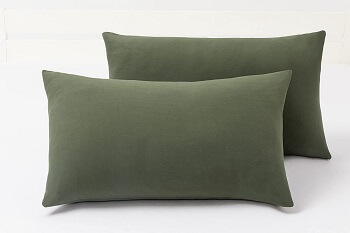
Polyester is another fabric that can be used for pillowcases, one that is a little more economical than the above-mentioned cotton option. Polyester is a synthetic material and is made to mimic cotton.
Unfortunately polyester does not have much temperature regulation which could lead to overheating. Polyester is wrinkle-resistant and can be found in any of the standard types and sizes.
Polyester is one of the least expensive types of fabric you can use. However, polyester doesn’t have the luxurious feel and high thread count found in other materials. Furthermore, polyester may not be the best choice for those looking to elevate the aesthetics of their room.
Flannel
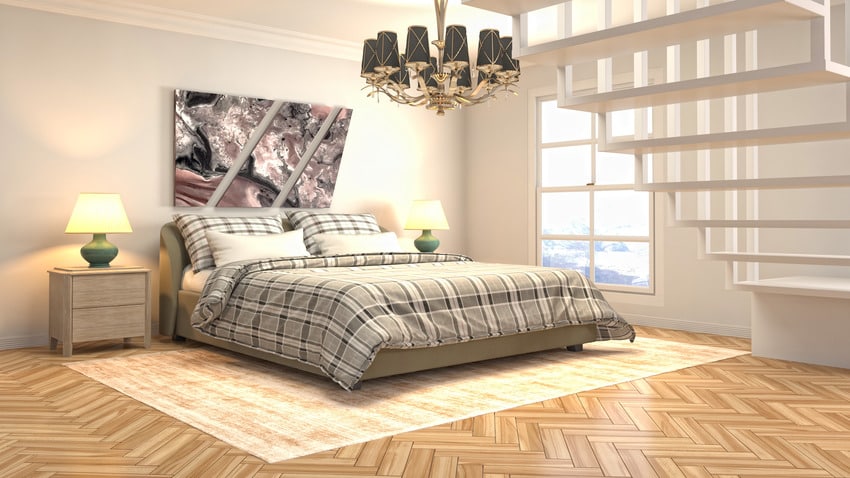
Flannel pillowcases are meant to be the softest and coziest of the fabrics that can be used to make pillowcases. These are often brought out in the wintertime to help keep people warm when the weather doesn’t.
Flannel fabric can cause frizz as well as tangle hair if long and not tied up. If buying flannel pillowcases it is important to buy high-quality flannel otherwise it could pill up or become damaged quicker than other types of fabrics.
While flannel is a great seasonal fabric it is often just that, it is not something that someone typically uses as an everyday options, these can get extremely warm and cause excess sweating if not used in the right temperatures.
Silk
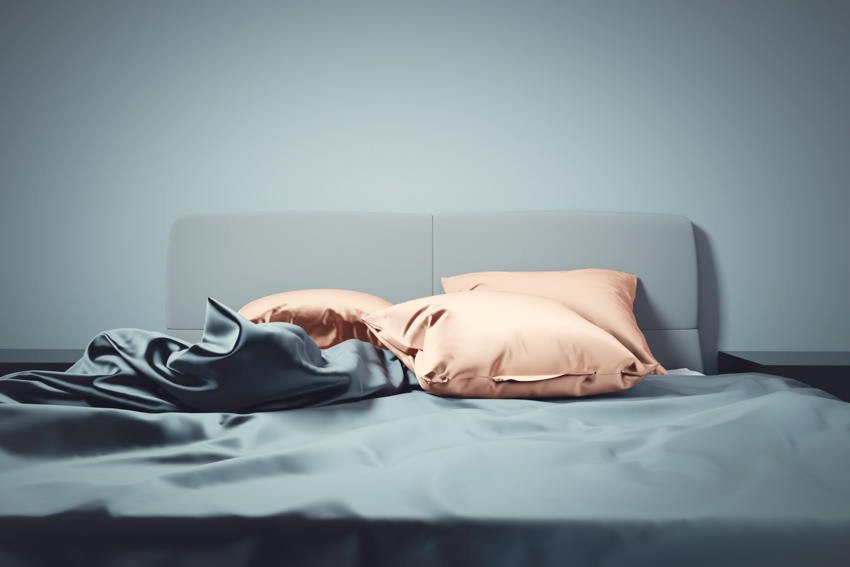
Silk pillowcases are made from a natural material that can be on the pricey side. Silk pillowcases are said to be a phenomenal surface for your face, reducing frizz, wrinkles, and fine lines. Silk is also a typically cool fabric making it more comfortable to sleep on.
Silk is the most ideal fabric and the most expensive material that can be used for pillowcases. They are also one of the highest qualities of pillowcases you can get.
This is one of the biggest allures of silk fabric. Read more related article like our guide to the pros and cons of silk sheets here.
Satin
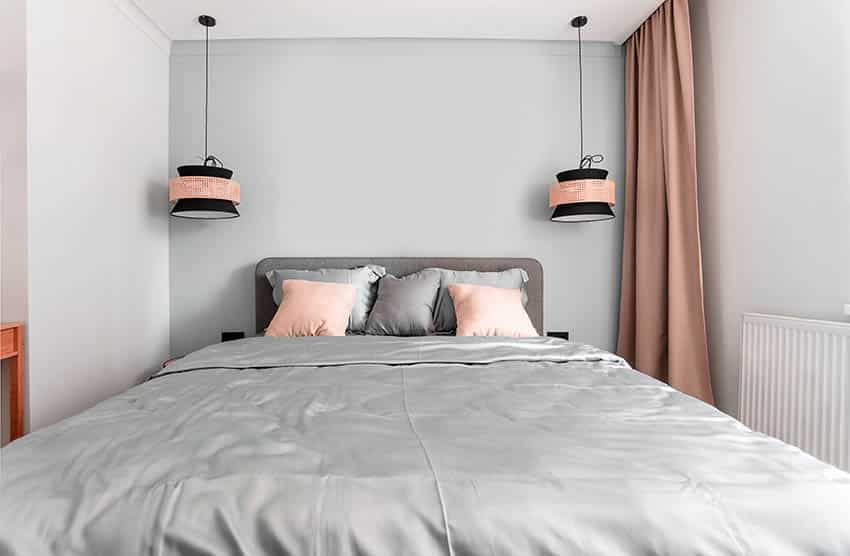
Satin pillowcases are a type of polyester that is made to mimic silk instead of cotton. This type of fabric gives smooth and cool features without the frizzy hair or the high costs of other fabrics. It is sometimes said that satin pillowcases can help with wrinkles or fine lines on the skin.
This type of fabric is typically second on the list of greatest types of pillowcases, but when you are not looking to spend an arm and a leg it can be a great second. They have the same features as silk with a little lower of a quality.
This can be a sacrifice to make if budget is an important factor. As a synthetic material though, it is not as sustainable as silk or cotton.
Linen
Linen pillowcases are a high-quality natural fabric similar to cotton. Many pillowcases listed as linen are actually made from the flax plant. Linen is a strong material that is antibacterial, great for regulating body temperatures, and easy to clean.
It’s an excellent choice for your hair as the fabric is anti-static and won’t cause the frizz associated with many other types. It has the ability to absorb moisture which makes it a good choice to use during the summertime.
Best Fabric For Pillowcases
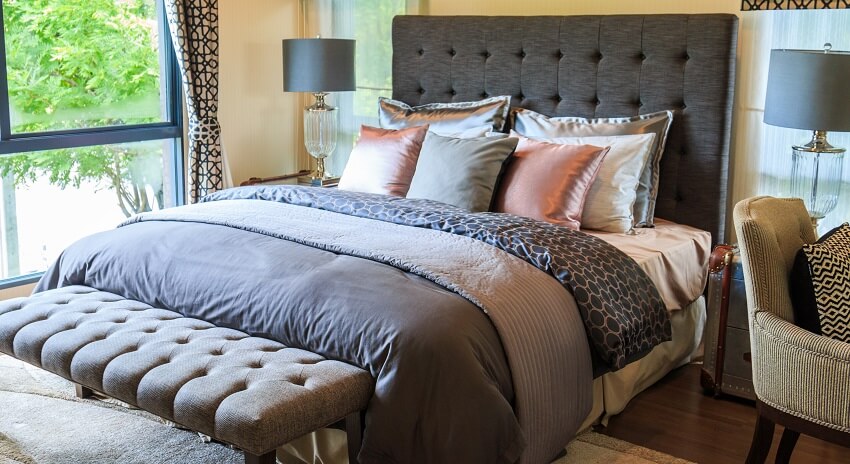
The overall best fabric to be used on a pillowcase is silk. This can be for both a pillow used to be slept on or a decorative pillow. Silk pillowcases are the best for your skin as well as temperature control, providing a soft touch and feel that is unparalleled by other materials.
This is shown by the escalated price compared to its competing fabrics. Silk pillowcases are luxurious and the price point shows exactly that.
When considering price as the primary factor you can switch to the synthetic version of silk which is satin. Satin is a good second with most of the same qualities at a little lower price and a few different features.
Types Of Closures
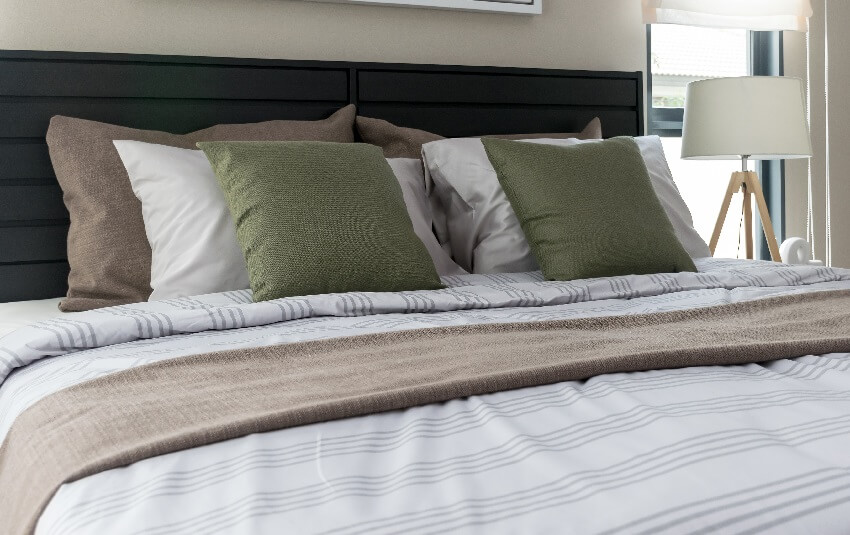
Now that you have seen the different types of pillowcases that you can get, and the types of fabrics that can be used, now all you need to figure out is how to keep it closed!
This can be done with a few different types of accessories. The fasteners of the pillowcase can make or break the usefulness of the overall product.
You can not use the pillowcase if it keeps falling off now can you? Some options are better than others, but some are also easier to put on. You will want to consider how many times you will need to use the opening when deciding how secure you want to make the closure.
If you make the closures too tight you can make it difficult to remove the pillow for cleaning or aesthetic purposes. The most common types of pillowcase closures are as follows.
Back Closure Pillowcase
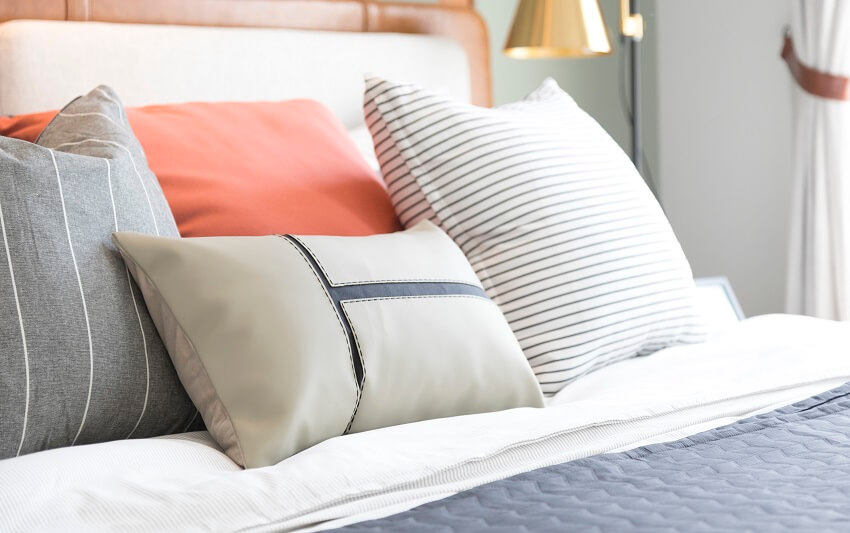
A back closure pillowcase is typically used in a decorative setting since it is easily hidden on the backside of the pillow. This can be used as a sleeping pillow as well as it keeps the pillow enclosed and can be made of any fabric. This back enclosure design can be made with a standard design or in a sham style.
Envelope Closure Pillowcase
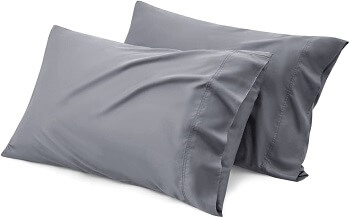
An envelope closure pillowcase is unique in how it encloses the pillow. The entire objective is to prevent the pillow itself from being exposed.
The envelope closure mimics that of an envelope tucking the pillow in and giving a finished and clean appearance. The end of the pillowcase has an extra flap that tucks into and over the pillow inside.
Zipper
A zipper is one of the most common types of fasteners used when it comes to closing things. A pillowcase opening is no different; a zipper is a perfect fit. The zipper can be sewn in to the opening. The downside of this can be that the opening is shrunk a little making it difficult to get the pillow in and out of the opening.
The risk of breaking the zipper can be higher if there is a smaller opening, but they can be fixed or replaced as needed. Zippers can be uncomfortable if they are not properly tucked in. That being said they are typically the favored type of fastener.
Velcro
The tried and true fastener we have been using since childhood: Velcro. Velcro can be used for closing up pillowcases by placing each piece of velcro on the opening by either gluing or sewing the Velcro in.
This makes for an easy to open pocket to remove or replace a pillow whenever needed. This also gives a seamless look to the pillow from the outside if done correctly.
This can be handy for both pillowcases meant for sleeping and those meant for decoration. In most cases Velcro can be washed and doesn’t wear out, but if something get stuck in it the Velcro can be easily replaced. Velcro is one of the better types of fasteners when it comes to pillowcases.
Buttons
Another option to secure a pillow inside is by using a set of buttons and buttonholes. This method works but can be less effective than zippers or Velcro as there is typically space in between the button that flailing arms or fingers could get stuck in. These could also get unbuttoned if not careful.
Overall buttons can work well, especially on a throw pillow. Buttons are just sewn in and can be easily replaced if one falls out.
The size and quantity of buttons can change the effectiveness of the buttons as a fastener. I wouldn’t recommend them for a pillowcase unless they are the only option.
Pins
While not the best option, when in a pickle safety pins can be a quick and easy way to close the opening of a pillow and keep it from escaping during a fitful night of sleep.
Safety pins are the best kinds of pins to use since if you absolutely have to as they can secure the opening without poking or scratching the user in the face or catching other fabrics (if used correctly).
Safety pins are typically only a temporary fix to a pillow falling out of the pillowcase, considering one of the other options would be more comfortable. Not only are the other fasteners more comfortable, they typically do a better job as well.
Do be aware that safety pins can leave holes in the material. They also have the potential to break or open and cause a painful poke.
Best Pillowcase For Sleeping
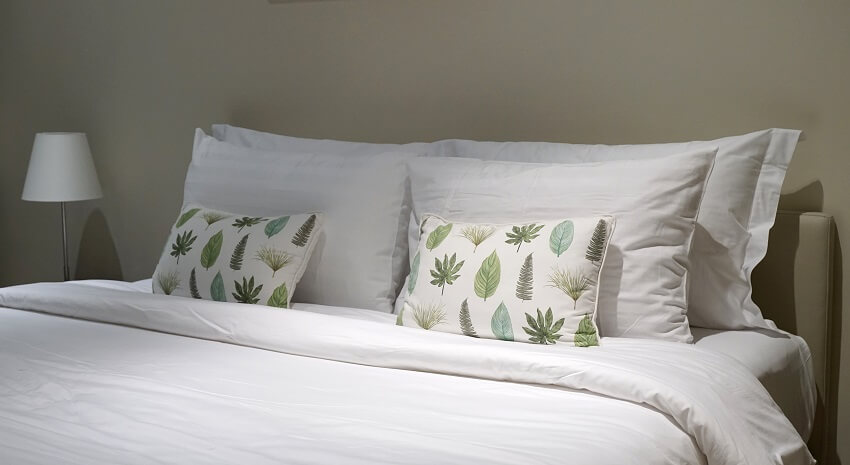
These types of pillowcases can be secured with a fastener as well to make the pillow as secure as possible. This will make for the most ideal pillowcase.
In addition to the pillow case, the fill material should be considered for the best nights sleep. Side sleepers may benefit from memory foam while stomach sleepers may want memory foam, down, or latex material. It’s also a good idea to periodically flip or rotate your mattresses so they don’t get indentations or sag.
Best Pillowcase For Skin
The best type of pillowcase for the skin is going to be a silk fabric pillowcase. These are typically the best at reducing wrinkles to the face as well as fine lines.
Satin fabric is second in line when it comes to being good for the skin. These are often used in conjunction with a weekly cleaning schedule and facial cleaning, but in the long run it is the best for the skin.
In addition to fabric choices, the type of pillow filling – be it down, feather, buckwheat, memory foam, or a cooling wedge pillow – should also be considered when selecting pillowcases. As these will all help contribute to your overall comfort.
Pillowcase For Curly Hair
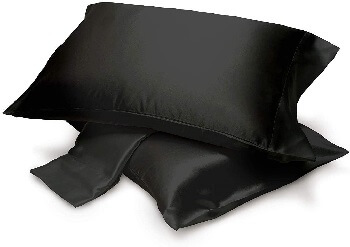
When looking to preserve the beautiful curls you have worked so hard to get – or that come effortlessly to you, the best type of pillowcase to use is silk or stain. Satin pillowcases are just a synthetic material meant to mimic silk. Overall satin will always be second best to silk.
Silk fabric pillowcases are great for keeping style curls fresh, reducing frizziness and limit any morning maintenance. Silk pillowcases are better at not retaining moisture compared to the cotton competition.
This is handy when you go to sleep with wet hair to let the curls set. This is the best selection for any type of hair, not just curly. Silk pillowcases can help avoid unnecessary tangling and breakage when it comes to all hair types.
How Often To Wash Pillowcases
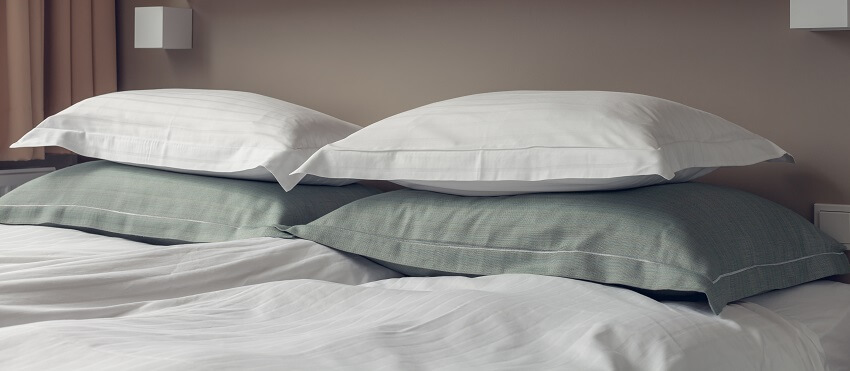
Washing pillowcases often is important for cleanliness and durability. Typically you should wash your pillowcases once every two weeks. This removes any of the sweat, dirt and other types of dead skin and oil that could end up on the pillowcase.
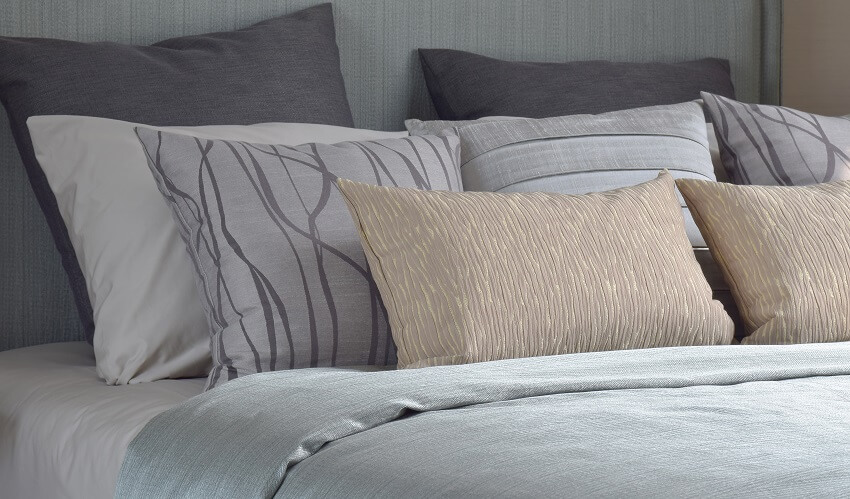
This is the point of having a pillowcase in general – so that you can wash the pillowcase instead of stuffing all the pillows in the washer every other week.
While a wash every two weeks is the average recommendation there could be situations where they should be washed every week.
In cases of skin sensitivity or acne-prone teens upping the cleaning to once a week will be worth it. Washing blankets and the rest of the bedsheets at this frequency is going to help keep the overall bed fresh and clean as well.
Visit our guide to different types of bed sheets for more related content.



